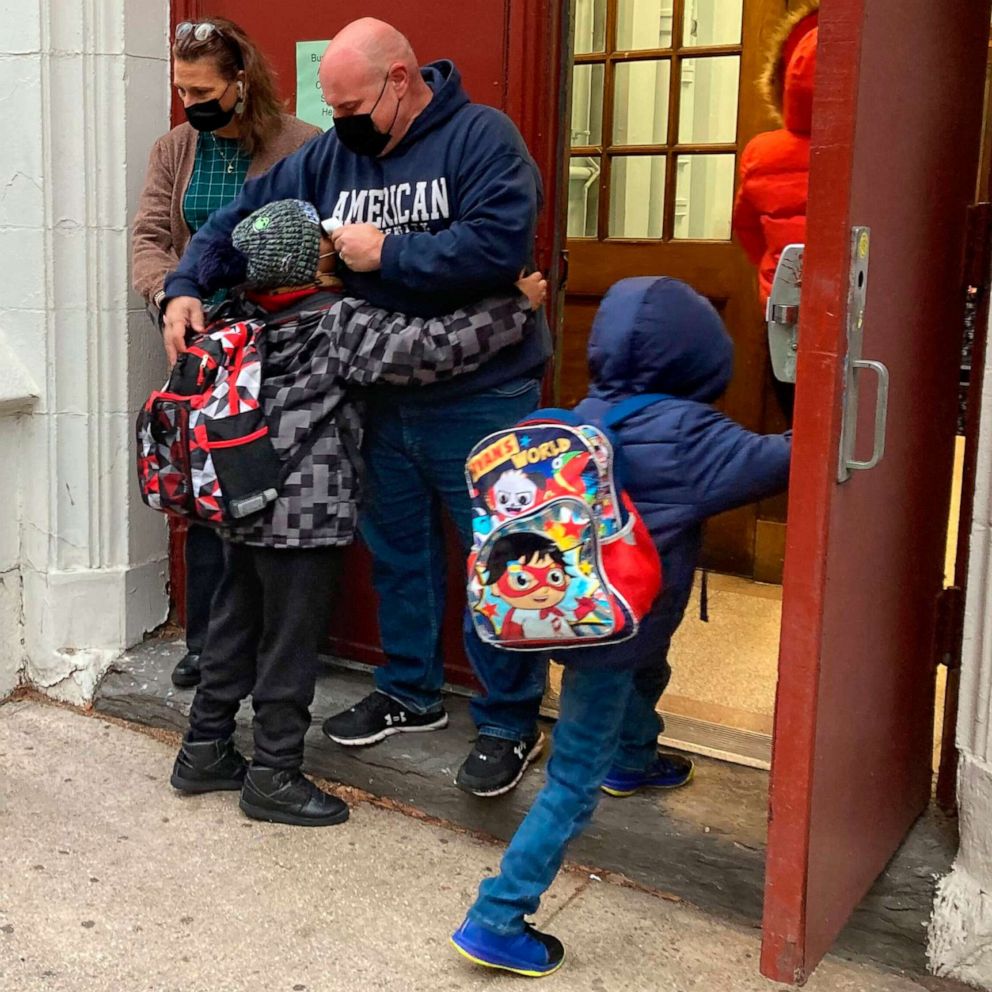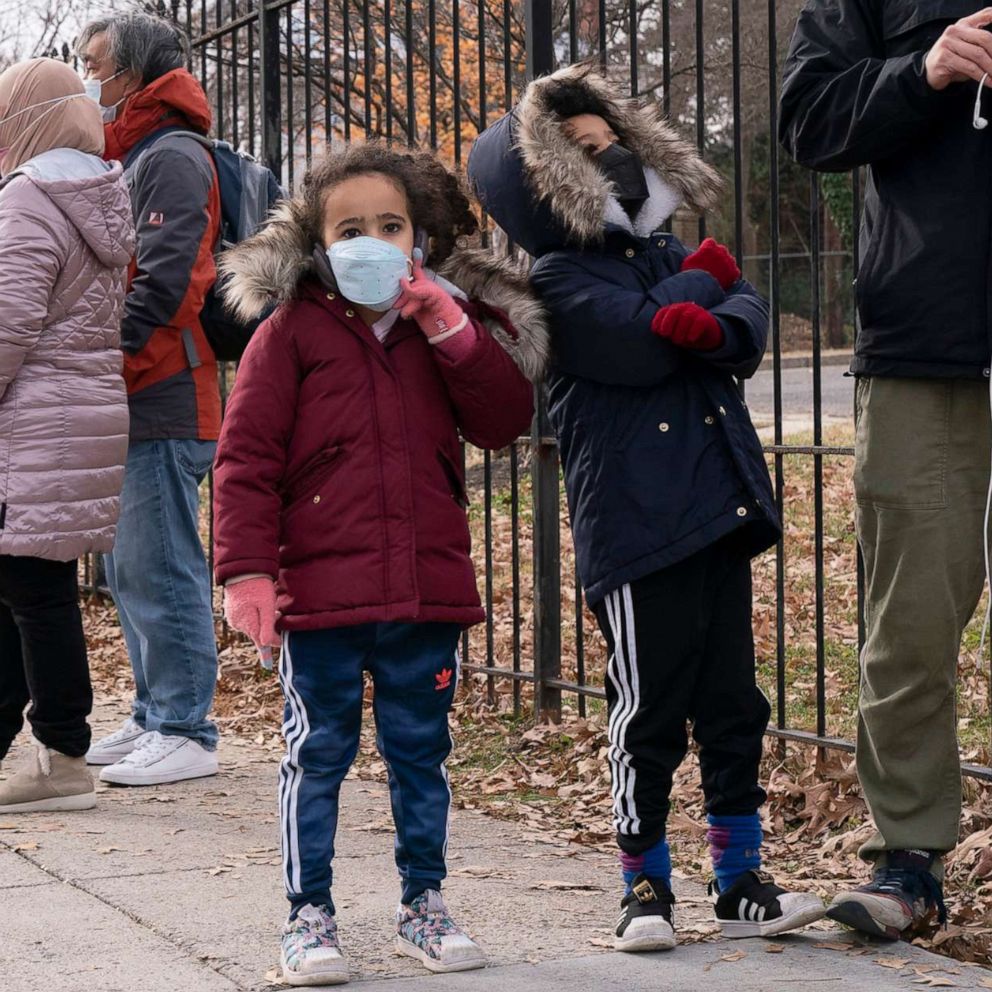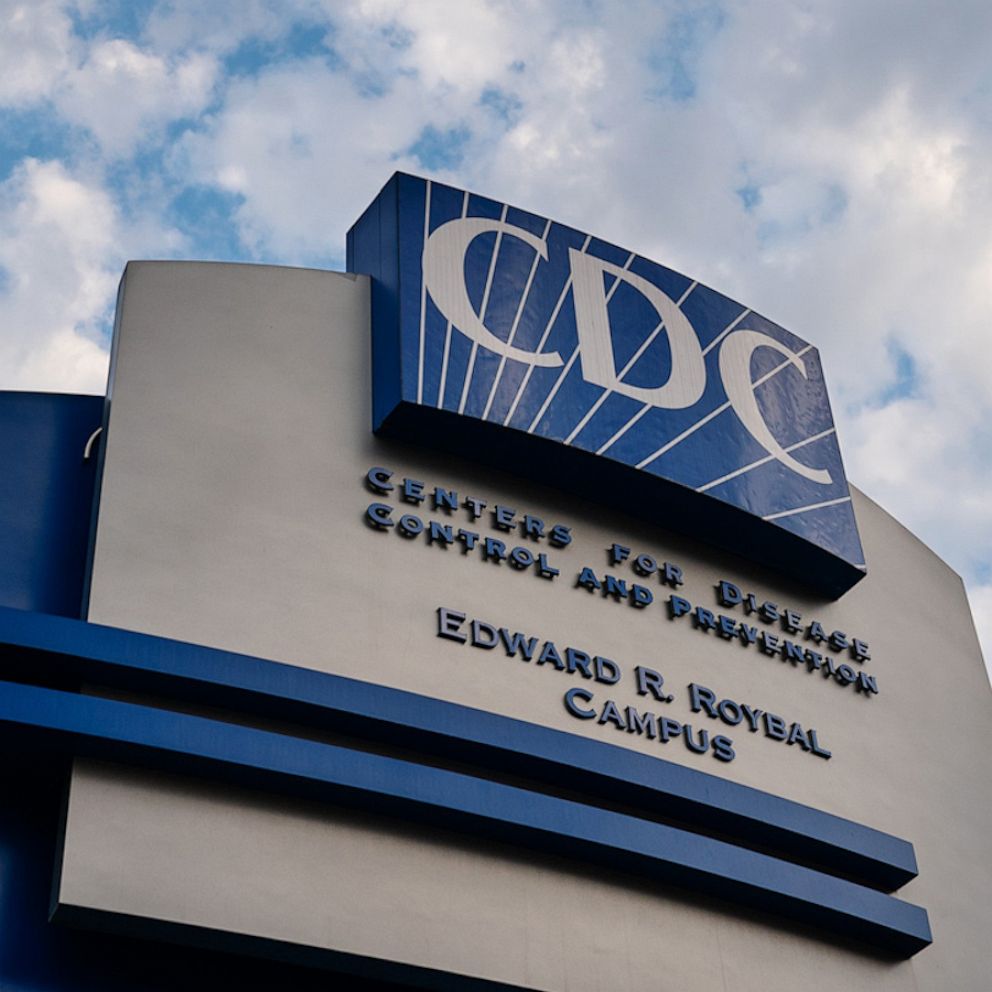Pediatricians answer parents' questions about COVID-19 isolation, testing
The recent wave of COVID-19 includes a rise in cases among kids.
Parents who have navigated the past two years of the coronavirus pandemic started the new year with a new set of challenges.
As the omicron variant sweeps the United States, the number of children contracting COVID-19 continues to rise. On top of that, not all children are yet eligible to be vaccinated against COVID-19, leaving them more at risk.
And just as millions of students returned to school after the holiday break, the Centers for Disease Control and Prevention released new guidelines around what to do when you get or are exposed to COVID-19.
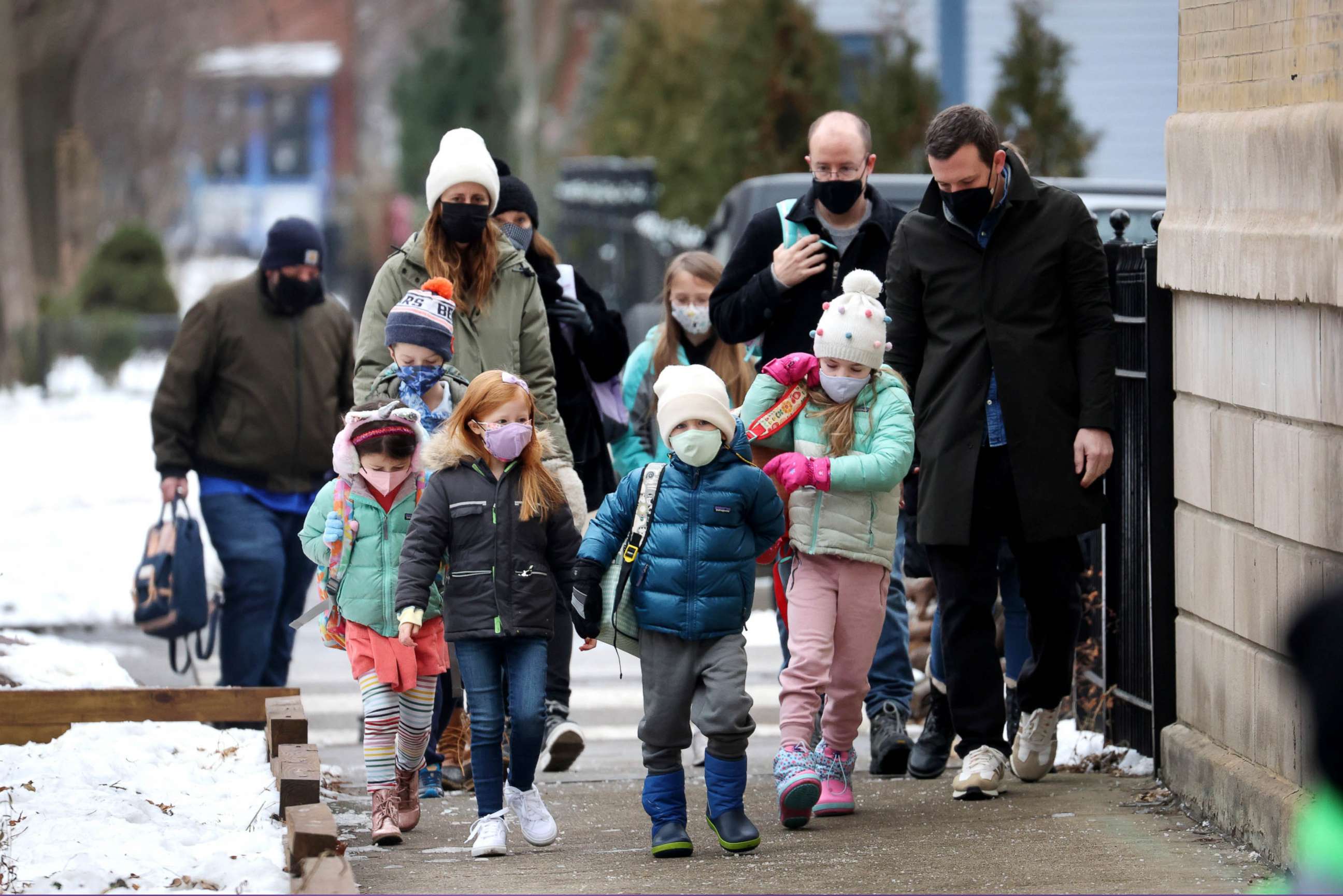
"Good Morning America" spoke with two pediatricians to help parents make sense of it all.
The two experts, Dr. Rick Malley, senior physician in pediatrics in Boston Children's Hospital's department of infectious disease, and Dr. Kristina Deeter, medical director at Renown Children's Hospital in Reno, Nevada, and specialty medical officer for pediatric critical care medicine at Pediatrix, a national medical group, both stressed the most important thing for parents to do right now is to make sure their child and family members who are eligible get vaccinated against COVID-19.
"We don't know what the next strain is going to be like, and you do want to have that vaccine in your system, and you want the entire series," said Deeter. "It's important to get it started now, to go ahead and vaccinate your kids, just like any other vaccines that protect them from all the other bad things."
Kids ages 5 to 11 are now eligible to receive two doses of the Pfizer vaccine, while kids ages 12 and older are eligible to receive two doses of the Pfizer vaccine, as well as a third "booster" dose.
Read on for more of Deeter's and Malley's tips for parents.
What is 'close contact'?
Many parents have at some point in the pandemic received a notice that their child was in "close contact" with someone with COVID-19, such as at school or day care.
That means the child was within 6 feet of someone with a confirmed case of COVID-19 for a total of at least 15 minutes over the course of 24 hours, according to Malley.
What is the difference between quarantine and isolation?
A person should quarantine if they think they have been exposed to COVID-19, even if they are not sure they have been infected with the virus, according to Malley.
A person should isolate if they have been infected with COVID-19, even if they do not have symptoms.
A way to remember the difference, according to Deeter, is to connect the "i" in infected to the "i" in isolate.
Isolation means a person is staying at home and keeping to themselves as much as possible, ideally staying in a separate room, not sharing items like utensils and towels and avoiding contact with other family members, according to Deeter.
Quarantining also involves staying at home but is not quite as strict as isolation. A person in quarantine should wear a face mask around the house and still try to limit contact with others, according to Deeter.
What is the CDC's new 5-day protocol?
If you get COVID, you should isolate for five days, according to CDC guidelines released earlier this month.
The isolation guidelines include both people with a confirmed case of COVID-19 and people showing symptoms of COVID-19. People in those categories should isolate regardless of vaccination status.
Day 0 is the first day of symptoms and Day 1 is considered the "first full day after your symptoms developed," according to the CDC. For example, if you have symptoms on Monday, Tuesday is Day 1 and Saturday is Day 5.
If your case is asymptomatic, Day 0 is the day you tested positive. But if people test positive without any symptoms, and then develop symptoms in the days afterward, they should reset their isolation clock back to zero on the day they have symptoms and isolate for another five days.
After five full days, you can leave isolation if you are fever-free for 24 hours and your symptoms are improving.
Loss of taste and smell, two common COVID symptoms, can last "for weeks or months after recovery" and do not qualify as symptoms that should keep you in isolation.
Once you leave isolation, you should still be cautious and try to minimize interactions with others for five additional days. If you are in public, you should wear a "well-fitting mask," the guidance says.
If you're unable to mask, or if you can mask but will be around high-risk people, you should opt to continue to isolate for a full 10 days.
Deeter said she thinks of it as a "5 + 5" approach, meaning five days of isolation followed by five more days of caution.
The reduction from the previous guideline recommending a 10-day isolation period is a result of new research in an ever-evolving situation, explained Deeter.
"Studies and strong research show that most people, when contracting this virus, are most contagious in the day before they develop symptoms and the two or three days after they develop symptoms, up until about seven days after starting symptoms," she said. "When the CDC looked at this, our 10-day guidance to stay isolated or quarantined post-exposure or illness was a little bit excessive. We're trying to keep people working and keep kids in school."
Can children do play dates, after-school activities after 5 days of isolating?
Once a child in isolation has reached Day 5 and they have no symptoms, it is still best to keep them away from others for five more days, according to Deeter.
"During that 5 + 5-day period, if you can really just be strict about that period, keep them away from other kids, not go to play dates, have them wear their masks, wash their hands, not kiss, hug, love on other kids as much as we want them to be able to," she said. "Just be a little more careful."
The best option for all kids during this season of the highly transmissible omicron variant is to keep kids' interactions with each other outdoors as much as possible, added Malley.
Does being in close contact with someone with COVID-19 require quarantine?
Not if you are vaccinated, according to the CDC.
People ages five and older who are up-do-date on their vaccinations do not have to quarantine after being in close contact with someone with the virus. They should, however, wear a mask when in public for 10 days after the close contact.
It is safe for kids ages 2 and older to wear face masks, and it is recommended that all children, vaccinated or not, wear face masks while in school, according to Deeter.
When should I test my child for COVID-19?
The cost and lack of access to COVID-19 tests has added to the difficulties for parents.
Anyone with symptoms of COVID-19, including kids, should assume they are positive, according to both Deeter and Malley.
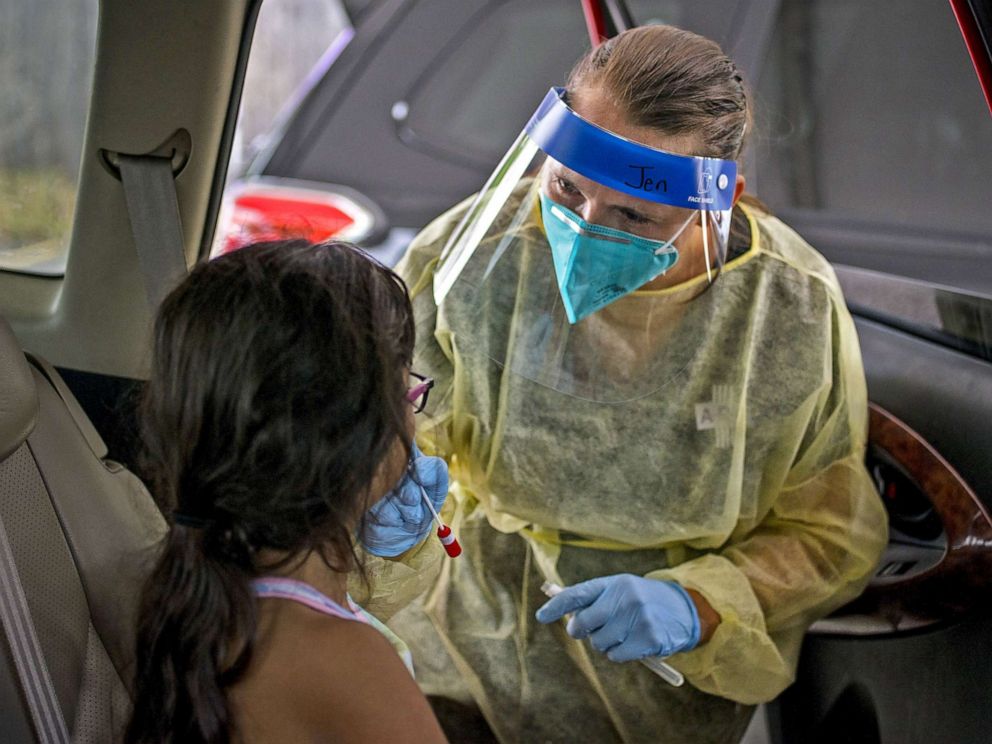
If a child has symptoms of COVID-19, they should be kept home from school and tested right away to confirm whether or not they have the virus. If the child tests positive, they should isolate and be tested again in five days.
If a fully vaccinated child is exposed to someone with COVID-19 and is not showing symptoms, the best time to test is five days after that exposure because that is how long it takes to develop enough antigen in the body for the test to be accurate, according to Deeter.
If tests are available, it is useful to test also before events, like travel or gathering with families.
The American Academy of Pediatrics has a helpful online guide on testing, as does the CDC.
What if my child is too young to be vaccinated or masked?
Deeter said she urges parents to be particularly cautious with children under the age of 2, who are both too young to get vaccinated and too young to wear masks.
"Knowing that COVID can still make them pretty sick, just like any of the respiratory viruses can, I would still be careful with that little group of kids," she said. "Try to create your own little cohort in your neighborhood or your playgroups who are all committed to being very careful ... hand-washing, not showing up at playgroup if you've got symptoms or your child has symptoms."
"That's a really good idea so that we can keep our kids social but within safe spaces," she said.
ABC News' Cheyenne Haslett and Arielle Mitropoulos contributed to this report.
